Chef Jereme Leung is back for The Emperor’s Table
When chef Jereme Leung mentions his collection of 15,000 books, you can’t help but be impressed. “I’m possibly one of the rare chefs you’ll meet with such a library,” he says. “Any food in the world, from Palestinian to Israeli to Middle Eastern, I’ve probably read about it.”
This vast knowledge may form the backbone of his latest offering at China Blue in Conrad Manila: The Emperor’s Table. This limited-time menu, starting Aug. 22, showcases not just Leung’s expertise but also his ability to transform his years of learning and discovering ingredients into elegant dishes.
Leung’s culinary journey is as impressive as his library. He has successfully collaborated with renowned hotel brands, including Conrad Maldives Rangali Island, where he established Ufaa by Jereme Leung in 2014. His partnership with Conrad Manila birthed China Blue, a restaurant with a stellar reputation for its meticulously crafted dim sum and grandiose dining room.

The Emperor’s Table menu is a testament to Leung’s explorations and deep dive into rare ingredients. It begins with starters such as marinated crab meat with avocado in a crispy puff roll and marinated sweet plum drunken king prawn. “With Filipinos,” Leung explains, “we know they usually eat raw seafood only in Japanese restaurants. This one’s marinated in Shaoxing wine, slightly cooked.” The result? A tender and sweet prawn, cleverly respecting local tastes while introducing something new.
As we move through the menu, Leung’s knowledge shines through unexpectedly. The double-boiled sturgeon tendon and dry sea conch with morel mushroom kung fu soup features morel mushrooms from Yunnan.
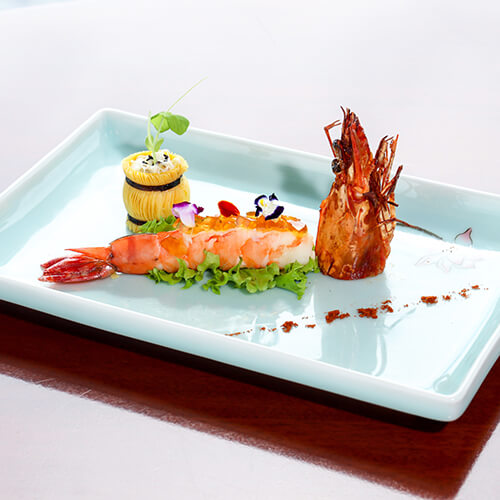
“The Yunnan Province produces about 80 percent of the world’s fungus,” Leung shares. “These can’t be cultivated. They only come from natural forests, available from May to October.” It’s a soup that tastes of place and time.
When a diner asks about his fondness for Yunnan, Leung reveals an intriguing historical tidbit: “Less than 300 years ago, in the Ming Dynasty, that is where the emperor of China, at that time, would abandon an official that he didn’t like. He would put you to the farthest end of the world, Yunnan.” He adds, “Interestingly, it’s now become a source of ingredients that can’t be cultivated anywhere else.”
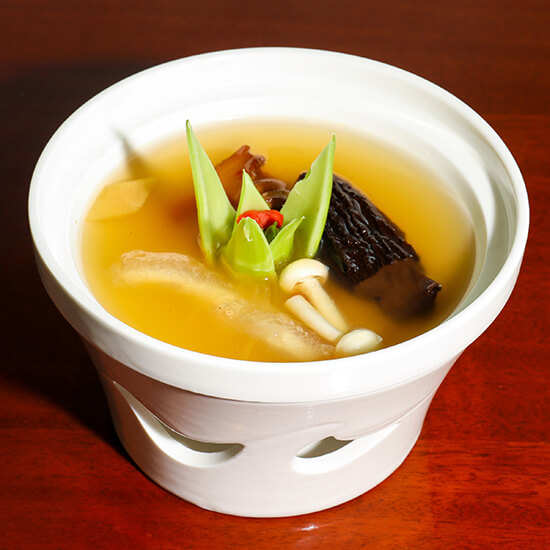
Chef Leung’s passion for Chinese history is matched only by his wit. While explaining a soup featuring sturgeon, he shares, “The white pieces of tendons that you see, that is actually the muscle of the sturgeon fish, this is what helps the fish maneuver. A sturgeon swims very fast, so I’m sure every one of us will swim very fast after having this soup.”
What’s impressive is how seamlessly Leung’s team brings his vision to life. Each dish demonstrates meticulous cooking and artful plating. Even the service staff glides through the dining room. It’s evident that Leung hasn’t merely absorbed the knowledge from his 15,000 books—he’s masterfully shared this wisdom with his entire staff, from kitchen to dining room.
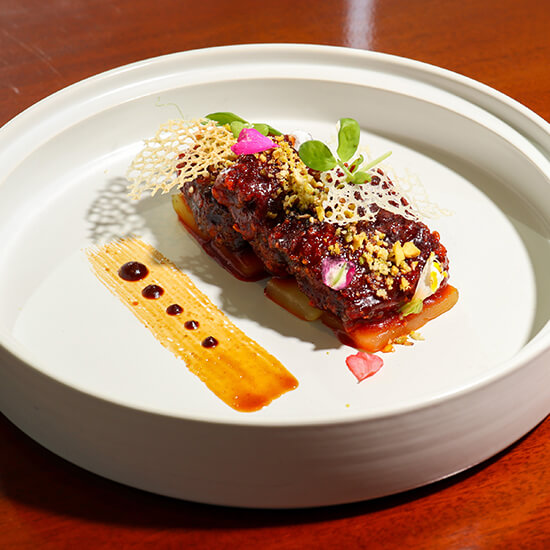
The main courses, such as the wasabi beef wagyu pistachio with green bamboo shoots, are equally captivating. “I’m on the road more than 180 days a year,” he says, explaining that this is one way he learns about ingredients. But he’s quick to emphasize the collaborative nature of the kitchen.
Executive Chinese chef Eng Yew Thor created the pan-fried black cod, served with torch ginger flower gravy sauce and pomelo. While chef Thor is trained in Cantonese cooking, he likes to play with other flavors. This dish takes a cue from Rojak, a popular salad of mixed vegetables and fruits eaten in Malaysia and Singapore. It has a sweet and sour sauce comprising local prawn paste, sugar and lime. It’s a great example of how China Blue combines traditional Chinese cooking with creative twists that appeal to Filipino taste buds.
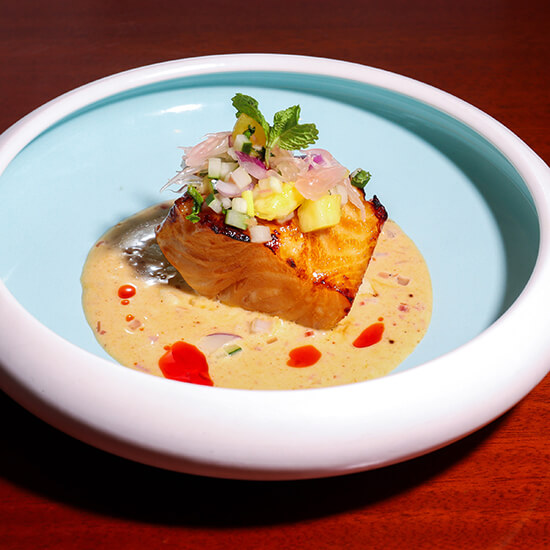
Perhaps the most intriguing dish is the braised Yin Yang rice with dry scallops and dry fish maw, featuring orzo rice and Tibet rock grain.
“The Tibet rock grain is very interesting,” Leung enthuses. “It comes from the Himalayan mountains.” Among his many TV shoots for MasterChef, he discovered this grain that grows between rocks. These kinds of rare, carefully sourced ingredients make dining at China Blue a unique experience.
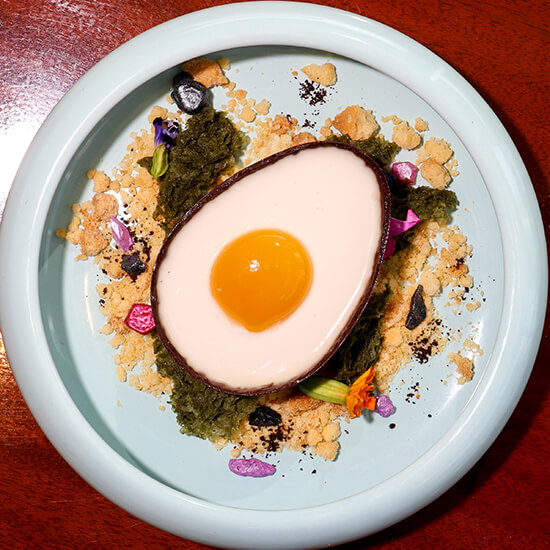
The meal concludes with a dessert—chocolate egg coconut mousse with mango puree. This was chef Leung’s personal favorite.
“Good food is about what arouses people’s interest,” Leung reflects. “It’s about the way we change, about the thought in the preparation.” You see this philosophy in every dish. Each plate isn’t just tasty—it’s interesting, making you think about the ingredients, the techniques, the stories behind the food.
“Among all the cities, I think one thing that’s unique about our menus and our restaurants is that I do not cookie-cut all our menus,” Leung adds. “We focus on suiting the local market. We don’t create something that I like in every market. I’d rather create something that my guests like.”


